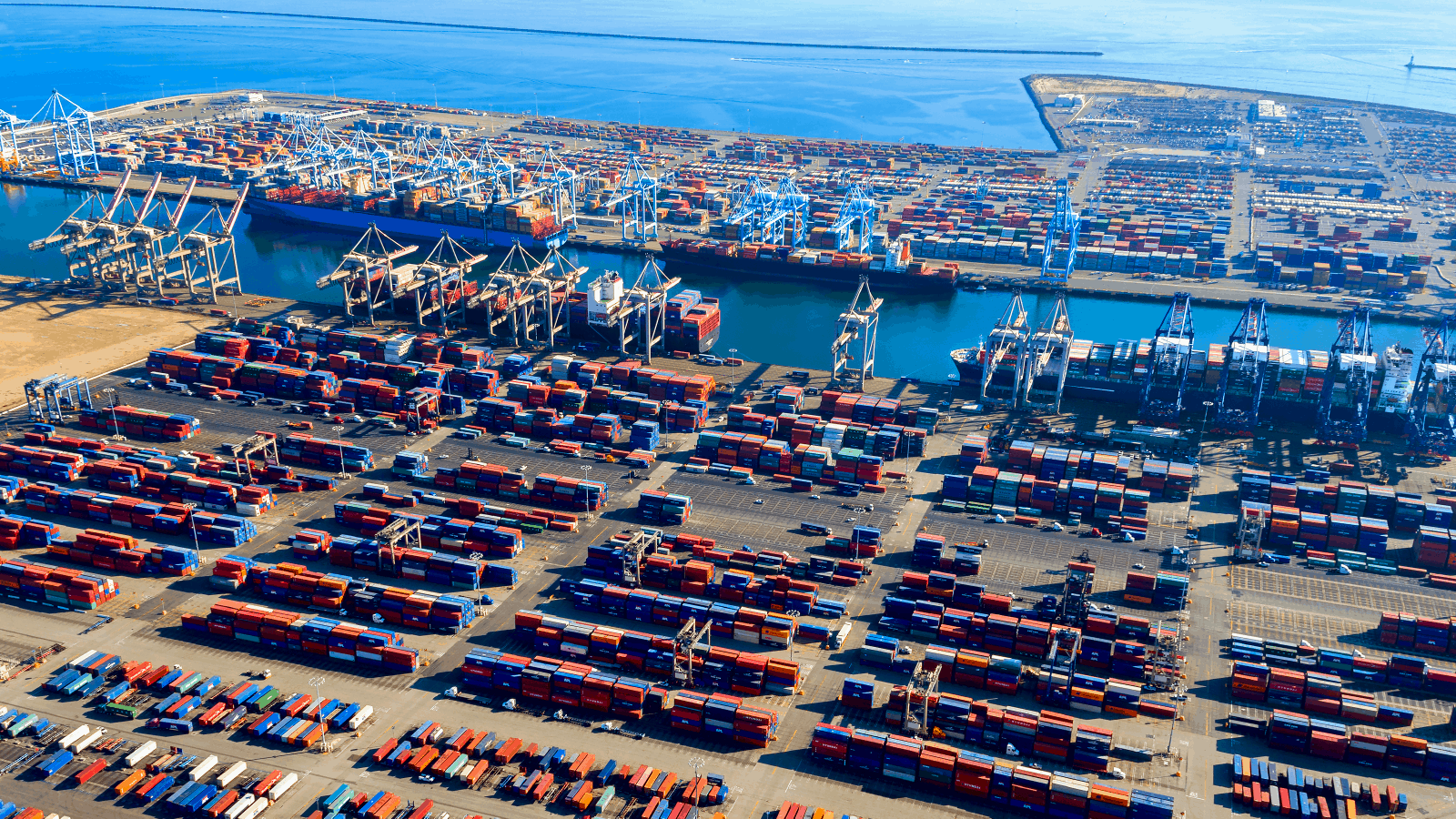A Bottleneck at California Ports Squeezes Manufacturers

The ship stuck in the Suez Canal may have gotten all the attention, but it wasn’t the biggest shipping problem of the year. That honor goes to the massive traffic jam at the ports of Los Angeles and Long Beach, which has dragged on since late 2020.
As NAM Director of Infrastructure, Innovation and Human Resources Policy Ben Siegrist tells us, this bottleneck is a huge problem for manufacturers in the U.S.—one that is costing our economy many billions of dollars. Dozens of ships are waiting in the harbor for days before they are able to unload, exporters are struggling to get their goods out of the country, and other manufacturers are waiting months for parts or finished goods to arrive.
The problem: The numbers tell the tale: at one point in mid-April, there were 23 ships waiting to dock at the ports, according to The Wall Street Journal (subscription), down from around 40 back in February. For comparison, Siegrist explains, the normal number of ships waiting in harbor is somewhere between 0 and 1.
Why it’s happening: Much of the congestion results from the pandemic—there has been an uptick in e-commerce during the lockdowns, and the economic stimulus has boosted consumption. Meanwhile, the typical increase in shipments during the holiday season just made things worse.
However, other factors are making this congestion particularly hard to fix, says Siegrist. These include:
- A shortage of shipping containers: First of all, shippers don’t have enough containers in the absolute for all of these goods. But in addition, some of them are finding it cheaper to unload in the U.S. and then send the empty containers back to Asia—to the disadvantage of U.S. manufacturers that want to load those containers with exports.
- A shortage of chassis: The trucks that transport containers to warehouses require special chassis to move the containers, but the ports also don’t have enough of these.
- A labor shortage: Like many other Americans, port workers had to deal with COVID-19 infections or exposures as well as cope with family responsibilities during the pandemic.
Logistical complications: Meanwhile, the logistics of international shipping are incredibly complicated, Siegrist explains. There are fewer ocean carriers today—only nine, down from more than 20 a few decades ago—which means manufacturers have fewer competitive shipping options. And the complex relationships between the multiple carriers, port operators and equipment owners are not easy to disentangle or control.
What do we do? Thanks in large part to the complexity of international shipping, there’s no easy answer, says Siegrist. Right now, the NAM is in discussions with the many federal agencies involved in international commerce, including the Department of Transportation, the Department of Commerce, the Office of the U.S. Trade Representative and a lesser known but vital agency called the Federal Maritime Commission. “We’re trying to create opportunities for our members to have a dialogue with policymakers,” says Siegrist.
- The eventual policy options might range from fines or fees for international carriers to legislative updates to the 1984 Shipping Act.
- It will also be important to strengthen the domestic supply chain for equipment like containers—almost none of which are now made in the U.S. The NAM is “talking more holistically about supply chains with the Biden administration,” notes Siegrist.
Stay tuned: The FMC will release its investigation into pandemic-related shipping delays in the coming weeks.
